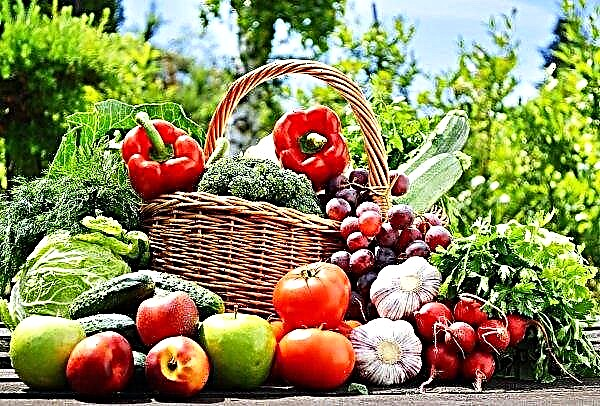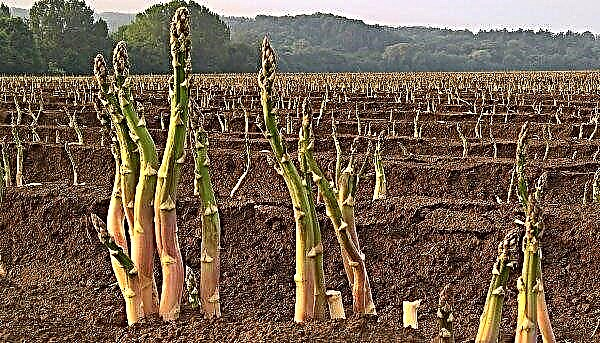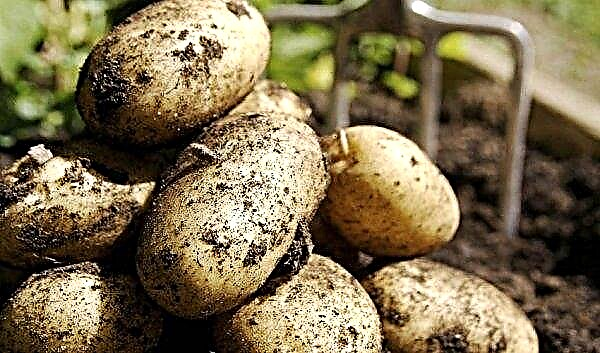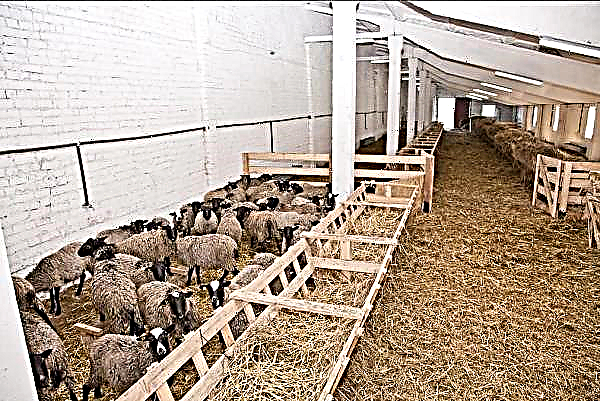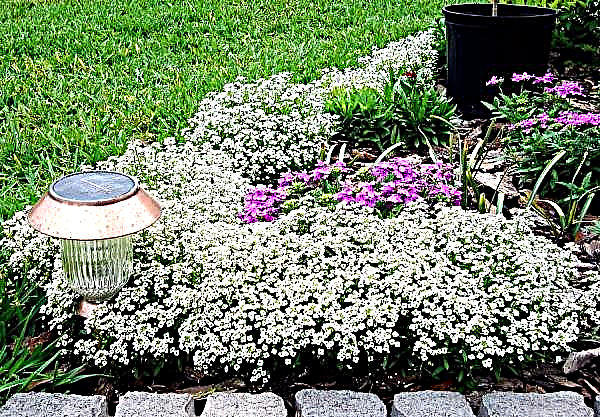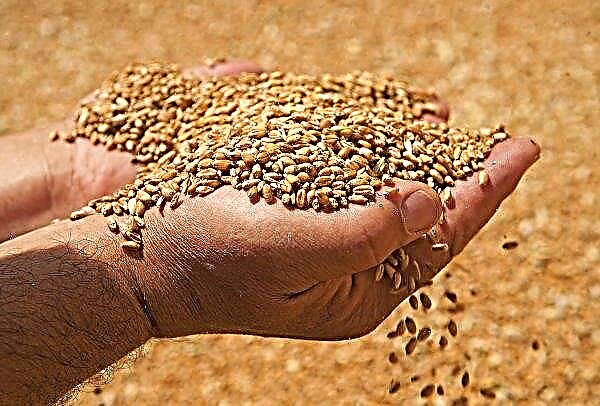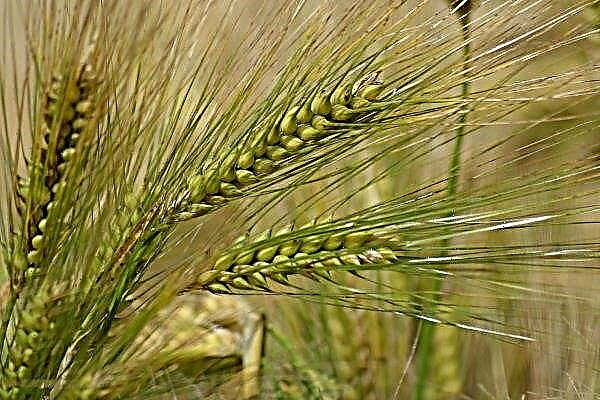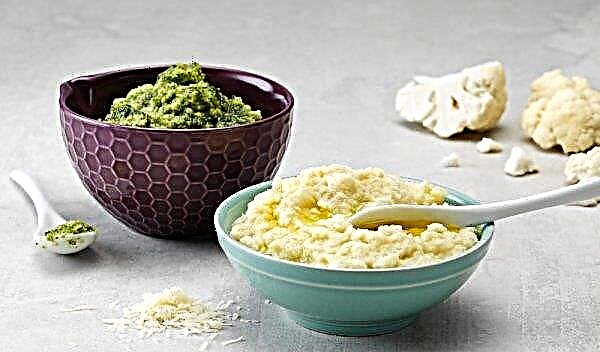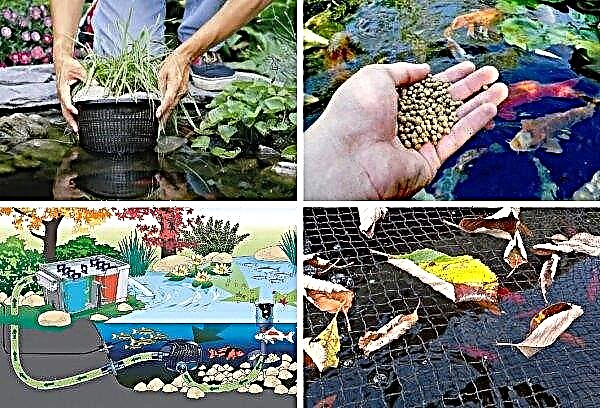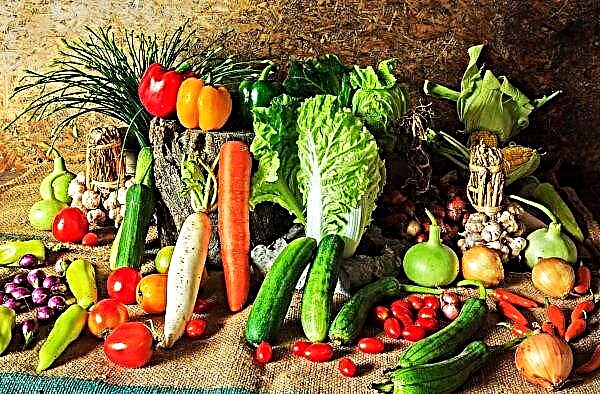These shaggy and hornless animals quite strongly beat out from the usual image of cows. This and other qualities of this interesting breed will be discussed in the article.
Breed description
The Galloway cow breed appeared in highland Scotland, where it has been cultivated for a long time, but was brought to modern conditions by local breeders only at the end of the 18th century.
Cool and rainy summers, not very cold and not very snowy winters allowed to keep this cattle on pastures almost all year, all the more so because long coat protected it well from the weather.
Today, the Galloway cows, like their ancestors, do not differ in high milk productivity, but they give the man meat of excellent quality and in sufficient quantity.
About what external differences are representatives of this cow breed, you can judge from this table:
| Horns | Are absent |
| Head | Large, overgrown with curly hair |
| Neck | Dense, short, with large folds |
| Chest | Wide, up to 2 m in girth |
| Torso | Elongated, roundish, barrel-shaped |
| Wool | Long, thick, wavy, up to 20 cm in length |
| Suit | Black with wide white stripes |
| Height at the withers (cm) | 120 |
Did you know? Cows have an extremely acute sense of smell, due to which they can capture odors 10 km from their location.
Advantages and disadvantages
- Breeders note such positive qualities of representatives of this breed, which are most clearly manifested in:
- increased stamina and vitality;
- immunity to most diseases;
- undemanding to the conditions of detention;
- quick adaptability to changes in diet and conditions;
- long life span;
- virtually no stillborn calves;
- docile character;
- ability to long transitions in search of pasture;
- high palatability of meat;
- the ability to maintain high meat performance even with a deterioration in the nutritional diet;
- successful acclimatization both in cold climates and in hot conditions.
- The disadvantages of the breed, which are much less than the advantages, include:
- low milk yield;
- slow muscle gain during the cold periods of the year, when nutrients are mainly used for the formation of subcutaneous fatty protection from the cold, which, however, is quickly replenished in the warm season.
Maintenance and care
As already mentioned, the Galloway cows are undemanding neither for the feed, nor for the conditions of detention, but still they can not do without leaving a person.
Summer playground
It is placed on a pasture and equipped with milking pens. Despite the fact that cows of this breed do not differ in high milk yield, they still need to be milked. In addition, canopies are necessarily built on summer grounds to protect animals from the hot rays of the sun or from bad weather.
Did you know? Despite the fact that the cows are in a lying position for almost half an day, this does not violate their physical form, which, if necessary, allows them to travel very long distances and even run quite quickly.
Arrangement of premises
When keeping these animals cold-resistant during severe frosts, a barn is still required. This is especially true for calving cows and calves. Typically, a room for keeping cows is constructed in the calculation that the stall for each animal will be 2 m long, 1.2–1.5 m wide and not less than 2.5 m high.
The floor is covered with sawdust or cut straw, the thickness of the layer of which is determined by a pitchfork stuck in it (the teeth of the pitchfork should not reach the floor). The room for cows is equipped with feeders and drinking bowls. Moreover, feeders for coarse and wet foods are done separately.
For coarse fodder such as hay, a wooden lattice structure is made with a length of at least 80 cm, expanding upwards. Wet foods are usually placed in buckets or troughs. Drinking bowls come in a wide variety of designs, starting again with a simple bucket and ending with automatic drinkers connected to the water supply.
Conditions of detention
For keeping animals of this breed not afraid of cold weather, it is important not so much to maintain high temperature in the barn, as, on the one hand, high-quality ventilation and, on the other hand, the absence of drafts. In addition, the humidity in the stalls should not exceed 70%.
Particular attention is required to the light regime, which, from the point of view of modern science, should be 16 hours of light and 8 hours of darkness.
Regular cleaning of the stall and equipment
The resistance of Gallovean cows to various diseases does not by any means cancel sanitary measures in relation to their stalls, flooring, feeders and drinking bowls. From the manure of the premises must be released twice a day.
The feeders should be cleaned of the remaining and stale food regularly, and the water in the drinkers, if it is not running there, must be replaced with fresh. Flooring is usually replaced as needed, although experts recommend doing so as often as possible.
Important! During cleaning, it is highly recommended to use cleaning and disinfecting agents for preventive purposes.
Feeding ration
Being completely undemanding to feed, this breed, nevertheless, needs a specific approach to its nutritional diet, since European standards provide for the feeding of these cows with feeds grown exclusively on the personal farm of the farmer without the use of mineral fertilizers, herbicides and pesticides. In addition, growing calves involves a complete rejection of antibiotics, growth hormones and all kinds of preservatives. Without observing these rules, meat is not considered environmentally friendly, and it will not be possible to sell it at a high price.
In addition, growing calves involves a complete rejection of antibiotics, growth hormones and all kinds of preservatives. Without observing these rules, meat is not considered environmentally friendly, and it will not be possible to sell it at a high price.
The rest of the diet of this cattle is not much different.
It mainly consists of:
- forbs;
- seeded hay;
- wheat;
- barley;
- oats;
- lupine;
- fodder beans.
Summer grazing in the pasture
In the warm season, animals switch to pasture in pastures, which is significantly smaller than in winter, supplemented by animal feed. The main danger in the pasture period is some poisonous herbs that can cause significant damage to animal health.
Poisonous plants in the form of are especially dangerous for cows:
- warty euonymus;
- speckled hemlock;
- marsh rosemary;
- black bleached;
- marsh calla.

Differences in winter feeding
In winter, the amount of succulent feed for one cow should reach 12 kg for every 100 kg of live weight, and coarse feed - up to 1.5 kg for every 100 kg of animal weight. Cattle are fed with concentrated feeds, consisting mainly of silage and steamed straw.
In addition, the winter ration of animals consists of:
- wheat;
- maize;
- oats;
- barley;
- potatoes;
- beets;
- sunflower meal
- bran;
- soybeans;
- beer and bread yeast;
- fish oil;
- wood ash;
- chalk;
- needles;
- table salt.
Water
In summer, meat cows need at least 60 liters of water daily, and in winter they are content with 35 liters. These volumes vary depending on what kind of food they use, whether the cow has calves and other factors. If there is no automatic drinker, cows must be hand-fed at least three times a day with room temperature water (+ 15–18 ° С).
If there is no automatic drinker, cows must be hand-fed at least three times a day with room temperature water (+ 15–18 ° С).
Important! One of the most important conditions when drinking animals is the purity of water.
Gallovean cows, which are suppliers of high quality meat, for all their unpretentiousness in terms of feeding and keeping, nevertheless require the fulfillment of some specific requirements, without which their meat loses its high market value.

